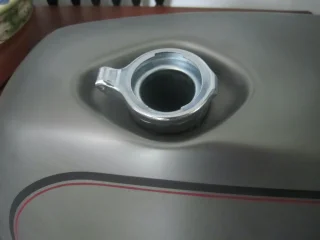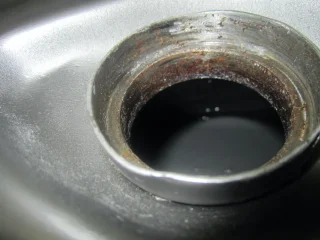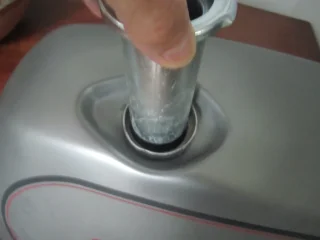jms
VIP MEMBER
- Joined
- Jul 26, 2005
- Messages
- 327
Last question for today The gas tank that I am using on my Atlas build is a Dunstall fiberglass tank. I recently cleaned and sealed it with Caswell. Its pretty cool looking and large.The Ceadness cap that was on it was fastened to the bung and built into the fiberglass resin all as on operation. The tank had a deep well around the bung so the end result was that the cap was seriously recessed in the well making pulling the pin to remove the cap impossible. The bung was quite old and rusted as well. I was able to remove everything without damaging the tank. What was left was a steel ring cast into the fiberglass. Luck would have it that I was able to get from Ceadness a bung that sits perfectly into the existing steel sleeve. I know this question will precipitate all sorts of recommendations but here it goes. I need an adhesive that has a proven history of being gasoline and ethanol proof as welding obviosly isn’t an option. Thanks in advance
The gas tank that I am using on my Atlas build is a Dunstall fiberglass tank. I recently cleaned and sealed it with Caswell. Its pretty cool looking and large.The Ceadness cap that was on it was fastened to the bung and built into the fiberglass resin all as on operation. The tank had a deep well around the bung so the end result was that the cap was seriously recessed in the well making pulling the pin to remove the cap impossible. The bung was quite old and rusted as well. I was able to remove everything without damaging the tank. What was left was a steel ring cast into the fiberglass. Luck would have it that I was able to get from Ceadness a bung that sits perfectly into the existing steel sleeve. I know this question will precipitate all sorts of recommendations but here it goes. I need an adhesive that has a proven history of being gasoline and ethanol proof as welding obviosly isn’t an option. Thanks in advance





